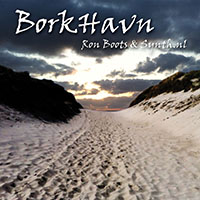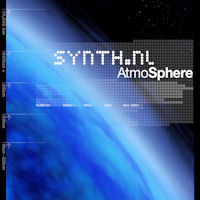 I started the calibration and tuning process. This surely takes some patience and I can't imagine how to do it without proper equipment. I started with the Midi2CV8 module. I used a multimeter to measure the voltage on the CV output. I attached a keyboard to the Midi input of the module and pressed the 'C' keys on several octaves. At these notes the output voltage should be exactly 1,2,4,5,6,7,8 etc Volts. There is just one trim potmeter on the module so with a screwdriver you can adjust it until this is right over the whole keyboard range. I tried it also an octave lower, because I suspected it to be too high, but then the behavior wasn't linear anymore so I guess it was OK as it was.
I started the calibration and tuning process. This surely takes some patience and I can't imagine how to do it without proper equipment. I started with the Midi2CV8 module. I used a multimeter to measure the voltage on the CV output. I attached a keyboard to the Midi input of the module and pressed the 'C' keys on several octaves. At these notes the output voltage should be exactly 1,2,4,5,6,7,8 etc Volts. There is just one trim potmeter on the module so with a screwdriver you can adjust it until this is right over the whole keyboard range. I tried it also an octave lower, because I suspected it to be too high, but then the behavior wasn't linear anymore so I guess it was OK as it was. The next module to test was the dual VCO. First thing to to is to see if all outputs give a proper signal. I used my oscilloscope for this. You also need to align the Saw wave on oscillator A and B by adjusting two trim potmeters on the module. Also the easiest way to do this was with the oscilloscope. More difficult though is tuning the oscillator and adjusting the scales on both the oscillators. Best way to do this I found is on hearing. Adjust the tuning of the oscillator to a note on another synthesizer and then adjust the scale to see if the notes in the octaves above and under are also in tune. If not adjust the trim potmeter and do it over and over again until it is all good. On oscillator A this took me 10 minutes, but on oscillator B almost an hour. So maybe I was a bit lucky on the first one. But after that I already could play a tune on the PAIA 9700S :)
The next module to test was the dual VCO. First thing to to is to see if all outputs give a proper signal. I used my oscilloscope for this. You also need to align the Saw wave on oscillator A and B by adjusting two trim potmeters on the module. Also the easiest way to do this was with the oscilloscope. More difficult though is tuning the oscillator and adjusting the scales on both the oscillators. Best way to do this I found is on hearing. Adjust the tuning of the oscillator to a note on another synthesizer and then adjust the scale to see if the notes in the octaves above and under are also in tune. If not adjust the trim potmeter and do it over and over again until it is all good. On oscillator A this took me 10 minutes, but on oscillator B almost an hour. So maybe I was a bit lucky on the first one. But after that I already could play a tune on the PAIA 9700S :) Tuning the VCF and VCA module is not so complicated. Basically the settings don't matter too much. I put all the modules in the frac rack and I did all the test procedures after that. Luckily the Midi2CV8 and the VCO module are situated so that you can still tune them by only taking the top cover off. So if necessary I can
Tuning the VCF and VCA module is not so complicated. Basically the settings don't matter too much. I put all the modules in the frac rack and I did all the test procedures after that. Luckily the Midi2CV8 and the VCO module are situated so that you can still tune them by only taking the top cover off. So if necessary I cando some fine tuning afterwards. Well now that the modules are in I guess it is officially a synthesizer in stead of a collection of electronics parts. I'm actually quite happy at this stage. After testing it looks like every module is working like a charm. So no mistakes made I guess.
 The last thing left to do is solder the patch leads. PAIA supplies some wire and the connectors. So you need to make them yourself. But before I started with that I used some other patch cords I have from my Korg Legacy Collection midi controller. They are mini jack as well. It was nice to hear some sound from the PAIA 9700S en play even some tunes. It sounds really analog, but I'm still figuring out what all the connections are and how it works. I put it back on it place in the rack in my analog corner and I guess tonight I will play a bit more with it and try to figure out all the modulation stuff.
The last thing left to do is solder the patch leads. PAIA supplies some wire and the connectors. So you need to make them yourself. But before I started with that I used some other patch cords I have from my Korg Legacy Collection midi controller. They are mini jack as well. It was nice to hear some sound from the PAIA 9700S en play even some tunes. It sounds really analog, but I'm still figuring out what all the connections are and how it works. I put it back on it place in the rack in my analog corner and I guess tonight I will play a bit more with it and try to figure out all the modulation stuff.










No comments:
Post a Comment